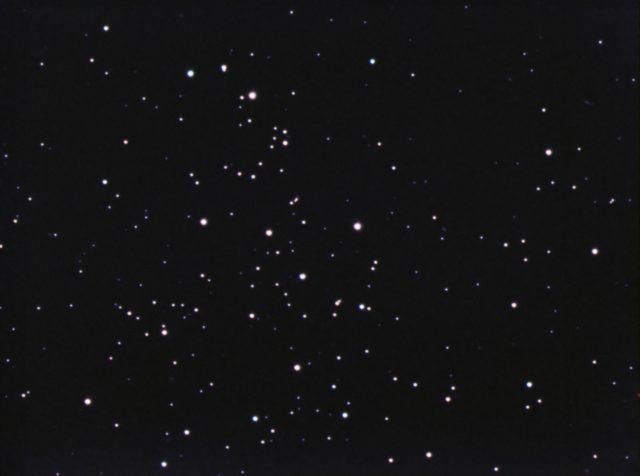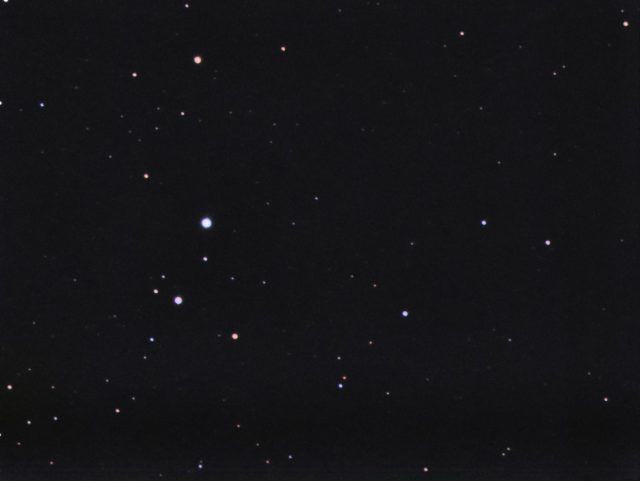
I purchased some rings and an extra-long dovetail bar for my Orion 6 inch, F/8 dobsonian and mounted it on the Atlas EQ-G. It has a really narrow view with a Sony IMX224 chip camera, but its sharp and there was not much distortion throughout the entire field.
The newt lets you shoot with no filters and you pick up everything, including IR, with the standard clear filter that Rising Tech cameras ship with. That’s great for galaxies. Although this first test shot was not a galaxy, I hope to try it out on some, soon.
The rig is sensitive to balance and wind being the tube is so long and is also very sensitive to vibrations. Since I was imaging next to a busy parking lot, I noticed lots of rejected frames in the SharpCap stacking program when the activity there increased. Even loud noises would disturb it. LoL.
Although conditions were not the best and the red zone light pollution I imaged through kept me from getting really deep, I did manage to do a few test shots before conditions deteriorated,
The above image was actually the second shot of the night, the first one being this unknown star field below that I shot to test the tracking. It was a little difficult to dial-in a star to get a 3-star alignment on the mount, so I just went with seeing how long I could track with PHD2 Guiding at the same old settings I used with the TV-85 on a random star field. 8 sec exposures yielded too many rejected frames, so I went with 4 sec for this one.

Before the clouds came back and ruined my session, I was able to get 60×4 sec sub-images at the relatively high gain of 3108 of this open cluster in Gemini, called IC 2157:

Anyway, if I can get the tracking to get me up to 8 seconds of exposure, I will be able to shoot some of those tiny galaxies that my Televue TV-85 just can’t do justice to.
